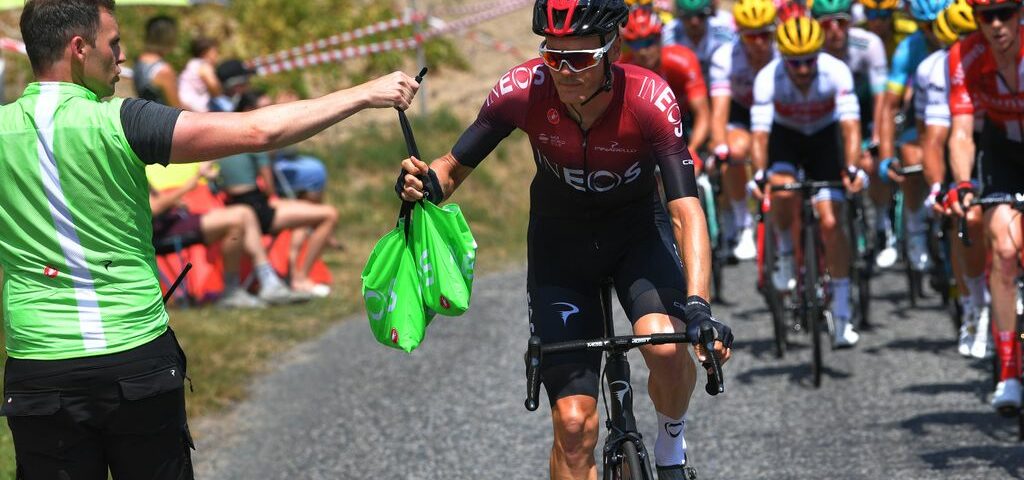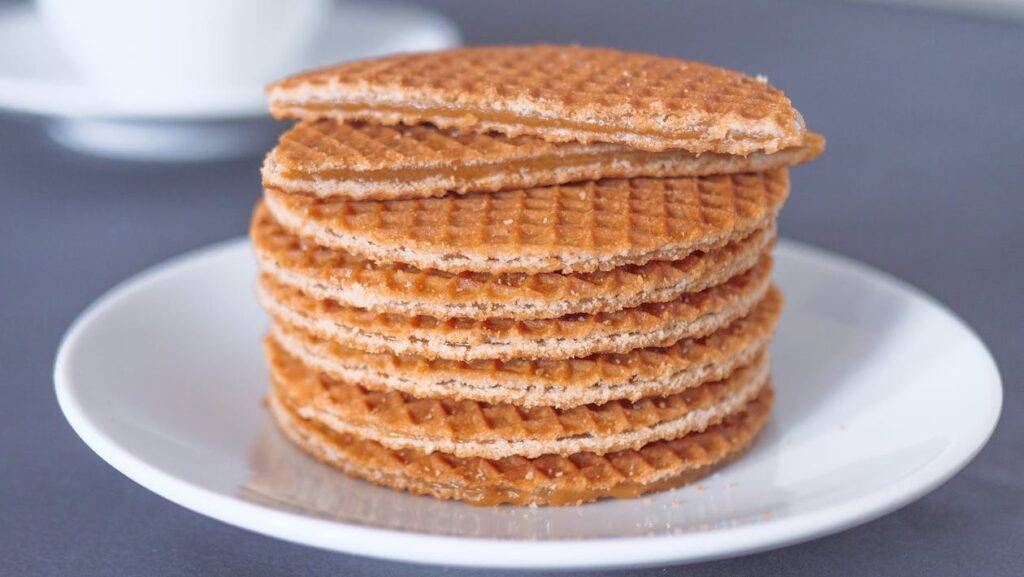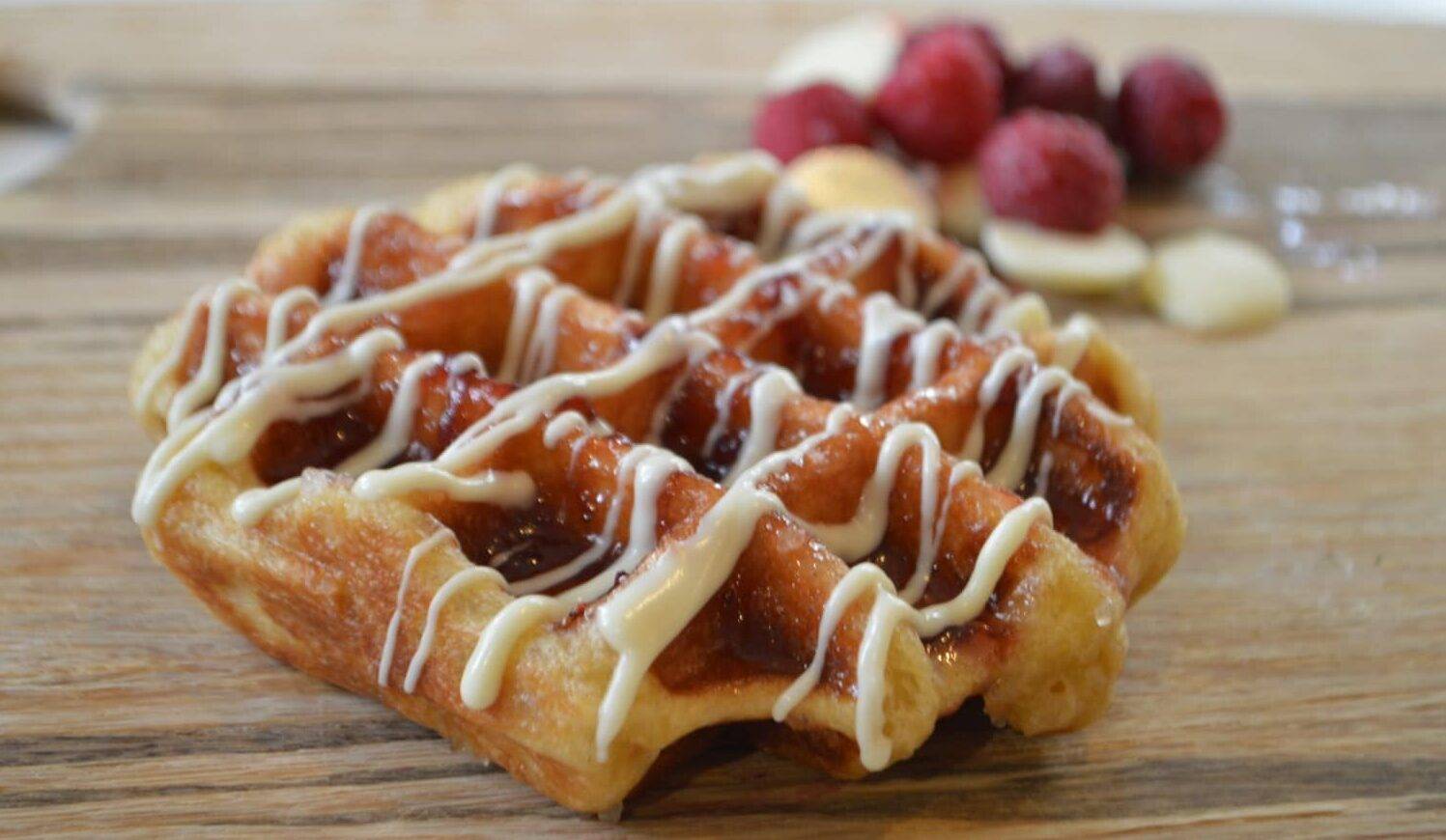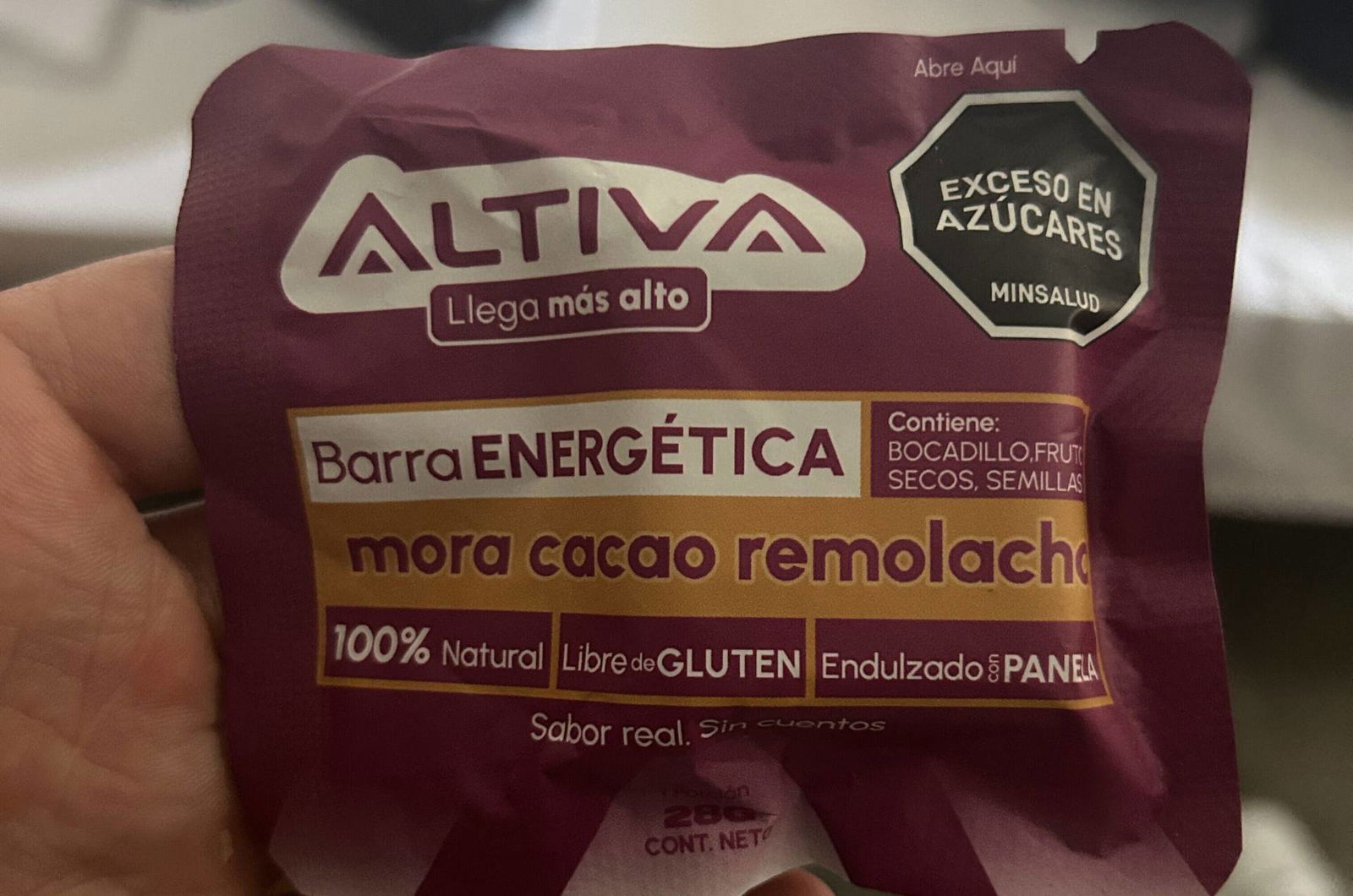Sport performance gels and drink mixes can be effective, yet they are not required for every ride. Zone 2 efforts, where a steady, lower-intensity pace is maintained, leave room for some “real food.” In this article, we explore natural and culturally rich alternatives from around the world that offer both nutritional benefits and great taste. From the classic bananas and dates to the indulgent Dutch stroopwafels, Belgian Liège waffles, Swiss Biberli, Colombian bocadillos, and Italian Veloforte bars, discover how traditional foods can provide effective and enjoyable fueling options for your long, steady training sessions.
Why sports performance gels and drink mixes are not an optimal choice for every ride
One of the reasons the pro peloton has gotten faster is improvements in fueling. Nowadays, with the help of sports performance drink mixes and gels, a typical pro rider devours over 100 g of carbohydrates per hour to sustain the constant workload during races without fading. As amateurs, we have the same products available to us. We may just need some initial training of our guts before we can achieve similar carbohydrate rates, as we explored in our article about a science-based performance drink. But just because we can doesn’t mean we should.
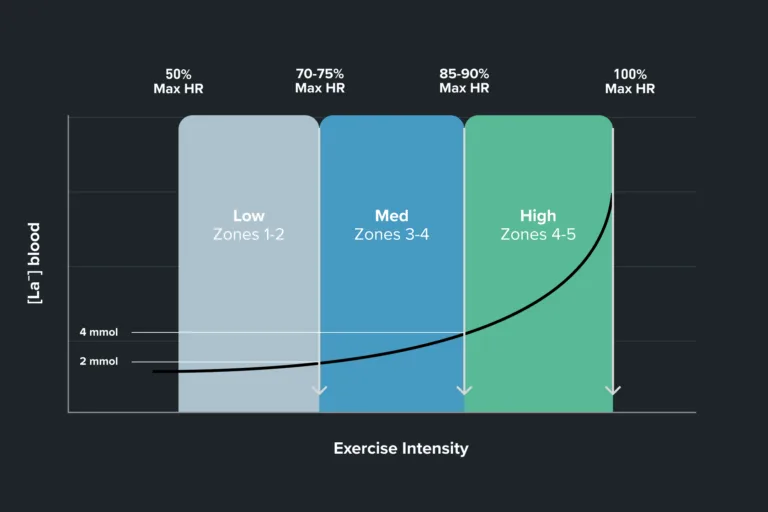
Modern training philosophy advises long, steady “Zone 2” rides
Modern training philosophy suggests that most of your time on the bike should be spent at a consistent, aerobic effort level known as Zone 2 rather than going full speed. This means you should be able to maintain a conversation and sustain this effort for an extended period. This exercise intensity is depicted on the left in grey on the graph above.
At this low intensity, it is still recommended to fuel your rides, but clearly, there is no need to max out carbohydrate intake with some technical products. Even more so since the relative wattages and energy needs are lower for most amateurs than pros. Still, making even easier rides is vital to help your body adapt and get faster. Also, remember to consider your meals before and after the ride, as well as the length of your cycling session.
Just because we can, does it mean we should? Sports performance gels and carbohydrate solutions are unnecessary for most rides. The long, sustained Zone 2 training sessions can be done with much more affordable, palatable real-food options from around the world.
The article suggests affordable options for fueling your rides, which may be more cost-effective and preferable to high-performance products. Natural foods can arguably also provide more micronutrients and be gentler on the stomach.
The Classic Fruits: Bananas and Dates
Bananas and dried dates are classic all-time favorites for simple, effective, and natural fueling during zone 2 rides.
Bananas provide a quick source of easily digestible carbohydrates, giving you the energy boost needed for sustained aerobic efforts. Additionally, they are high in antioxidants and rich in potassium, which helps reduce oxidative stress from prolonged exercise.
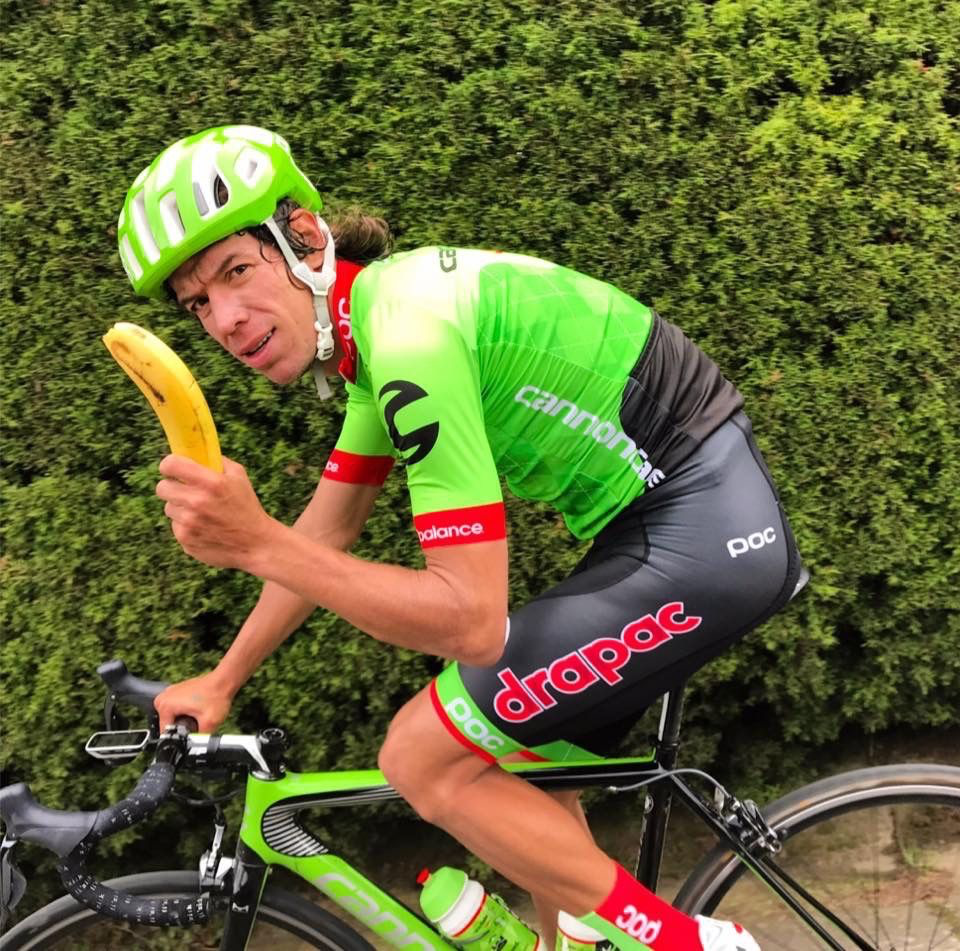
Dried dates offer a concentrated dose of natural sugars and fiber, ensuring a steady release of energy. They are among the fruits with the highest sugar content, making them particularly effective for providing quick energy. Dates are also rich in essential minerals, such as magnesium, potassium, and copper, which support muscle function and recovery.
Both fruits are portable, require no preparation, and are generally easy on the stomach, making them ideal for longer rides where maintaining a steady energy supply is crucial.
The Pro Peloton Favorite: Rice Cakes
Rice cakes have become a staple in the pro peloton, and for good reason. Popularized by the book “The Feed Zone Portables” by Dr. Allen Lim and chef Biju Thomas, rice cakes are a versatile and easily digestible source of carbohydrates. Rice, mainly white rice, is highly regarded for its ability to provide a quick, sustained energy boost without causing gastrointestinal distress. It is superior to other carbohydrate sources, such as pasta or potatoes. This is due to rice’s lower fiber content and higher glycemic index, allowing rapid digestion and absorption.
| Source | Calories | Carbs (g) | Fat (g) | Fiber (g) | Protein (g) | Water (%) |
|---|---|---|---|---|---|---|
| Pasta | 200 | 40 | 1 | 2.5 | 7 | 60% |
| Potato | 130 | 30 | 0.2 | 2 | 3 | 75% |
| Rice (Basmati) | 190 | 40 | 0.5 | 0.7 | 4 | 70% |
| Rice (Jasmine) | 205 | 45 | 0.5 | 0.6 | 4 | 70% |
Rice is high-carb, low-fiber and high-water-content, ideal for ride fueling
Rice cakes can be customized with various flavors and additional ingredients to enhance both taste and nutritional value. Common additions include scrambled eggs, bacon, or simple sweeteners like dried or fresh fruit, chocolate chips or honey, making them energy-dense and highly palatable. Unlike commercial gels and drink mixes, rice cakes can balance macro- and micronutrients with the right additional ingredients, helping cyclists maintain energy levels while supporting overall health. Moreover, because they are freshly made, they have a high water content, unlike bars, which are usually very dry for preservation.
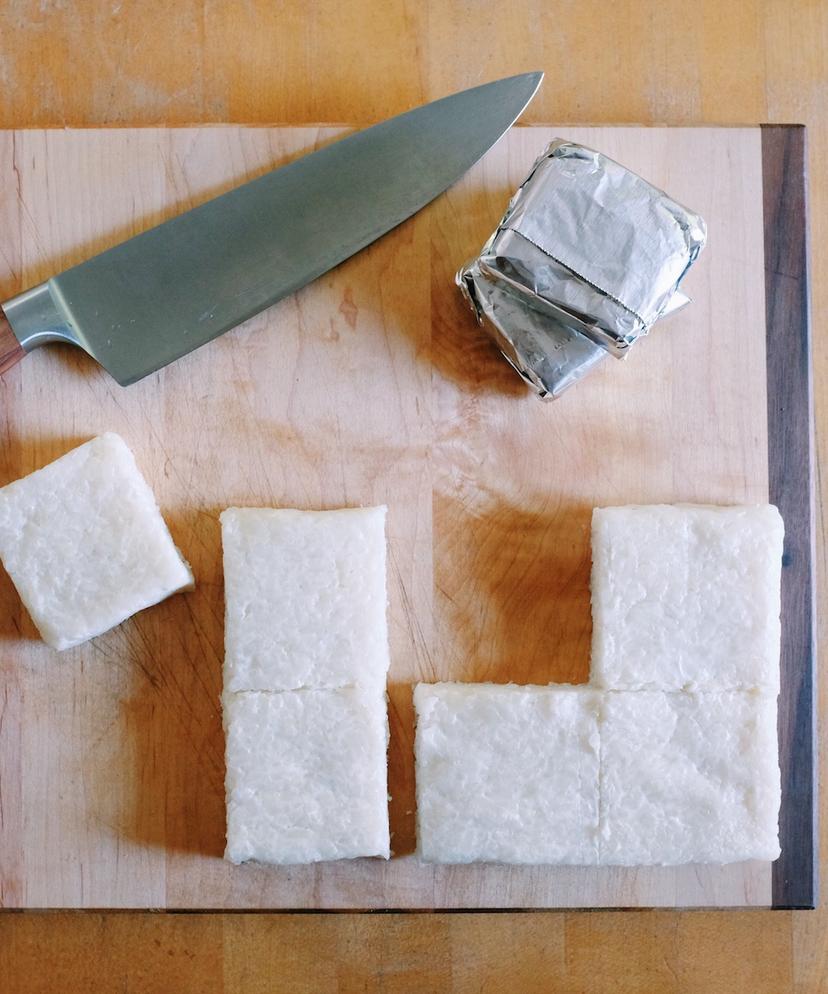
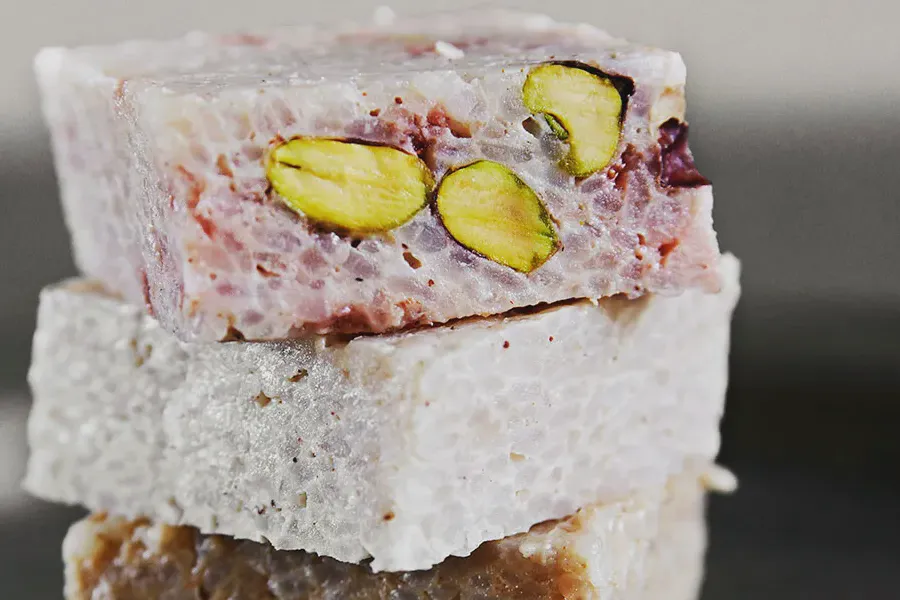
For those interested in trying out rice cakes, here are a few recipes to get you started:
These recipes provide various options, ensuring you can find a combination that suits your taste and nutritional needs.
Rice is superior to other carbohydrate sources like pasta and potatoes. It is an excellent source of high carbohydrates, low fiber, and high water content. These qualities have made rice cakes popular in the professional cycling peloton, especially during non-competitive periods.
Their compact size and ease of preparation make rice cakes an excellent choice for long rides that require consistent energy intake. By incorporating rice cakes into your fueling strategy, you can benefit from a pro-level nutrition that is both effective and easy on the stomach, helping you perform at your best during extended Zone 2 efforts.
High-Calorie Sweets from Europe
Europe is home to some indulgent high-calorie sweets that have fueled cyclists for ages. These treats, rooted in rich European bakery traditions, have been a source of quick and sustained energy long before the advent of modern sports nutrition products. While they might seem like a guilty pleasure, their high sugar content and palatability make them practical choices for maintaining energy levels during the long, steady efforts of Zone 2 rides.
The Dutch Power Plate: Stroopwafels
Stroopwafels, a beloved Dutch treat, have become a staple in the cycling community for their delicious taste and high-energy content. Originating in the town of Gouda in the late 18th century, these thin waffles, filled with caramel syrup, have a long-standing tradition of providing quick, easily digestible energy. Traditionally, Dutch cyclists would warm their stroopwafels over a cup of coffee or tea, allowing the steam to soften the caramel center for an even more delightful experience.
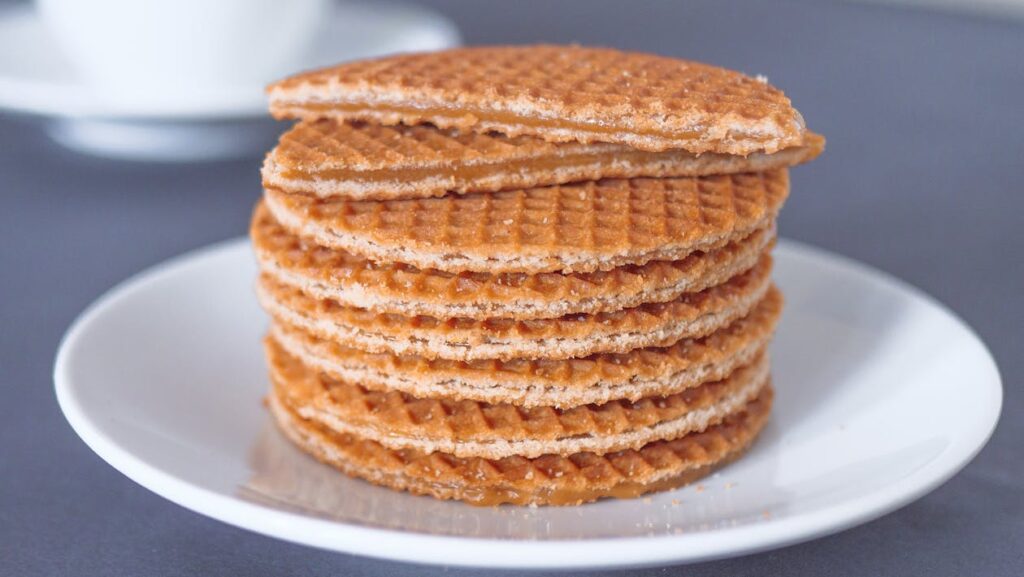
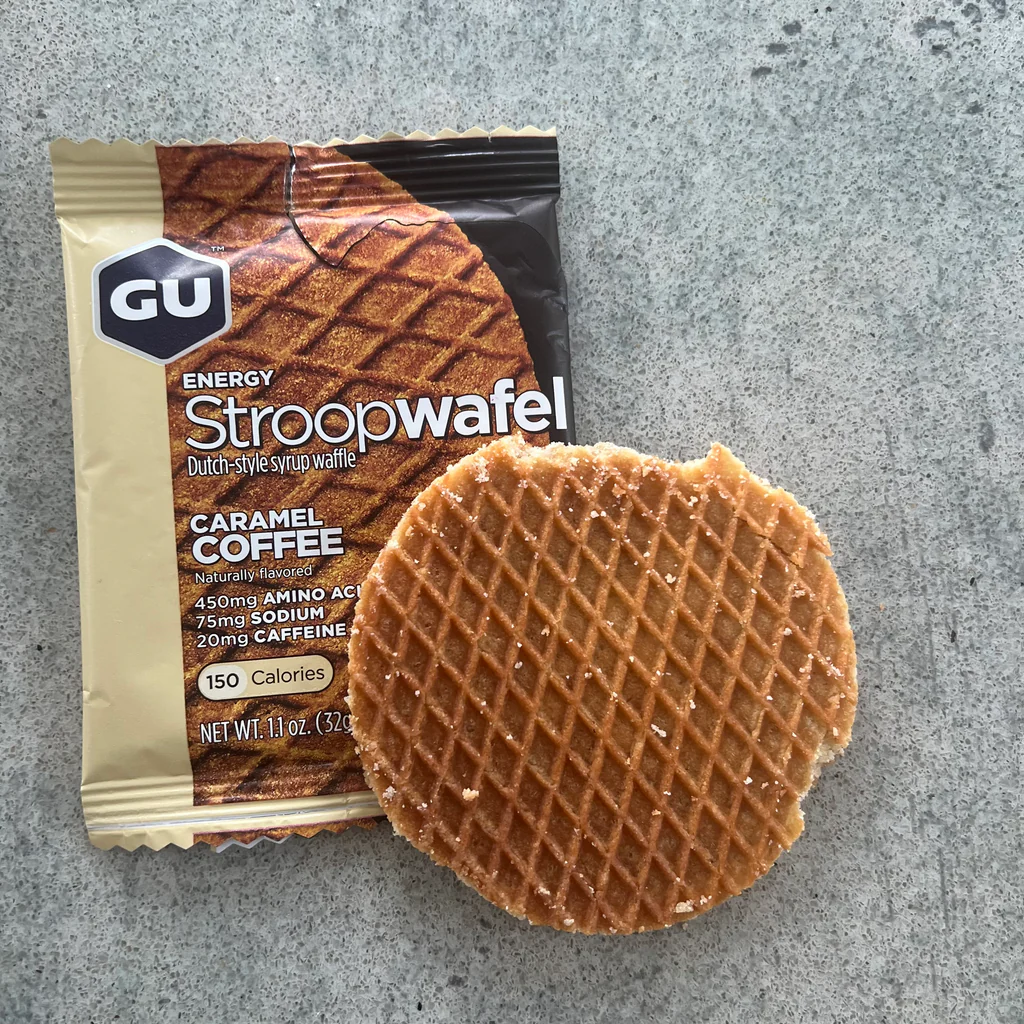
The popularity of stroopwafels among cyclists is no accident. These treats are not only tasty but also offer a balanced mix of simple sugars and carbohydrates that provide a quick energy boost. Moreover, their compact size and sweet, satisfying flavor make them a convenient and enjoyable option for on-the-bike fueling. In recent years, the appeal of stroopwafels has spread beyond Europe, with companies like GU Energy introducing their own commercial sports-performance versions tailored for athletes.
Stroopwafels not only add variety to your fueling strategy but also connect you to a rich culinary tradition that has fueled cyclists for generations. Their taste, convenience, and nutritional benefits make them an excellent alternative to more conventional sports nutrition products.
The Belgian Waffle Variant: Liège Waffles
The city of Liège, in Belgium’s French-speaking region, is most renowned for its significant place in cycling history and … its delicious waffles! Liège is the starting and finishing point of the Liège-Bastogne-Liège race, one of the oldest and most prestigious one-day classic races in professional cycling, often called “La Doyenne” or “The Old Lady.” This challenging race, known for its hilly terrain, attracts top cyclists worldwide as one of the key events in the early Spring classics season.
Liège waffles are a richer, denser alternative to the traditional waffle. They are known for their pearl sugar that caramelizes during baking, giving them a unique sweetness and chewiness. These waffles are more calorie-dense than regular waffles, offering a substantial energy boost. Their mix of simple and complex carbohydrates ensures immediate and sustained energy release, making them ideal for prolonged Zone 2 rides.
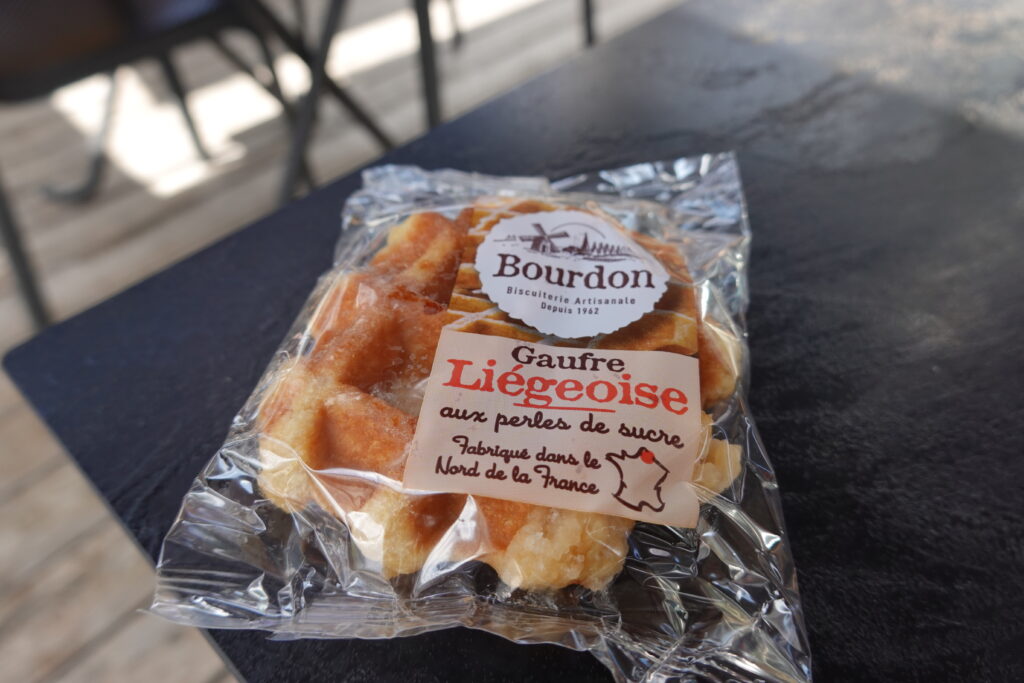
The rich culinary tradition of Liège, combined with its prominent role in cycling, makes Liège waffles a fitting snack for cyclists. Whether consumed during a ride or as a post-ride treat, Liège waffles perfectly exemplify how traditional foods can fuel demanding physical activities while celebrating regional heritage.
The Belgians and Dutch know a thing or two about bike racing. Most importantly, though, they have probably the two tastiest fueling snacks available: Dutch stroopwafels and Belgian Liege waffles will keep you going for those long days in the saddle.
The Swiss Biberli: A Taste of Tradition and Sustained Energy
The Swiss Biberli, a lesser-known but equally potent snack, is a small, dense pastry that combines honey, almonds, and spices wrapped in a thin layer of gingerbread. This traditional Swiss treat, originating in the Canton of Appenzell, goes by the full name of Appenzeller Bärli-Biber. But don’t ask for that, everyone knows them by “Biberli.” These treats are deeply rooted in Swiss tradition and are often enjoyed during long hikes in the Alps. Their portability and long shelf life made them a favorite among Swiss mountaineers, and they translate well into the world of cycling, where maintaining steady energy levels is crucial, thus making it an excellent choice for Zone 2 rides.
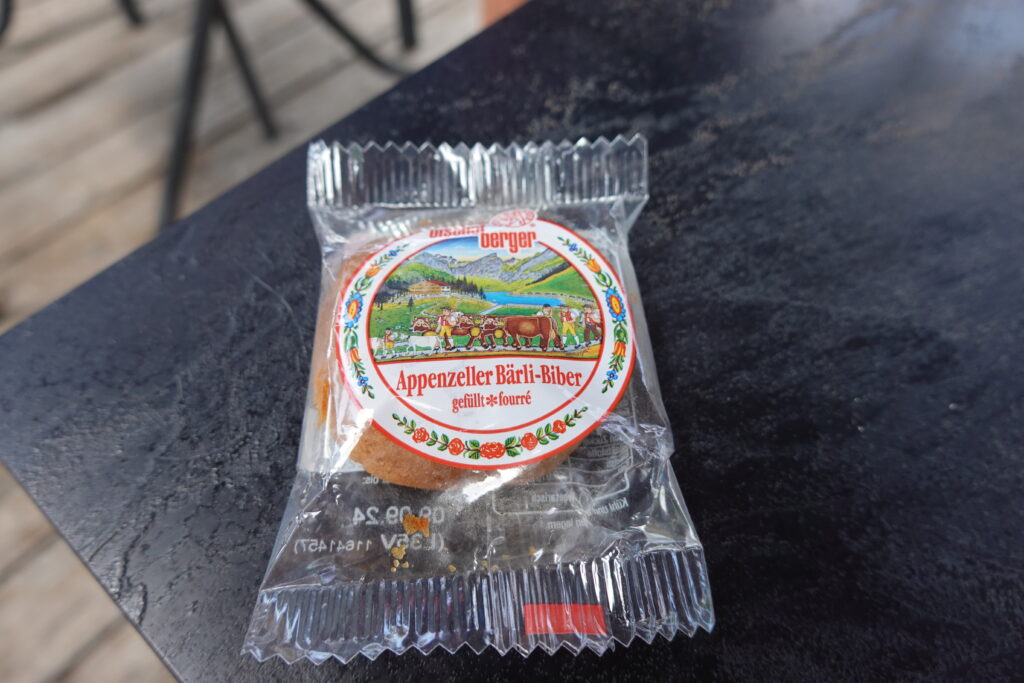
Biberlis are rich in natural sugars and healthy fats from almonds, providing a quick energy boost while also supporting sustained energy release. The honey in Biberli is a natural sweetener with a high fructose content, which provides an additional sugar fuel source. Additionally, almonds are an excellent source of protein and fiber, helping to keep you satisfied and your energy levels stable during endurance activities.
Due to their compact size and nutrient density, Biberli are easy to pack and carry, making them an ideal snack for long rides. By incorporating Biberli into your fueling strategy, you can add a touch of Swiss tradition to your cycling adventures while benefiting from a natural, balanced energy source.
The Colombian Rocket Fuel: Bocadillos
The traditional Colombian snack “bocadillo de guayaba,” made from guava paste, is a powerful and natural energy source. Known locally as “bocadillos,” these sweet treats are typically made by cooking guava fruit with sugar, yielding a dense, chewy paste that is often formed into small blocks or rolled in sugar. The natural sugars in guava paste provide a quick energy boost, while the dense texture ensures a steady release of energy over time. As such, bocadillos are portable, easy to store, and do not require refrigeration, making them an excellent on-the-go snack for cyclists.
Altiva.bar, a new energy bar based on Colombina Bocadillos
Recently, a new Medellín startup, Altiva, has transformed the classic treat by creating a cycling-adapted variant. They have introduced various flavors and adapted the bocadillos to resemble energy bars. Additionally, the products are now packaged for commercial use, which makes them more practical for transportation. If you’re in Colombia, you will find them at many bike stores.
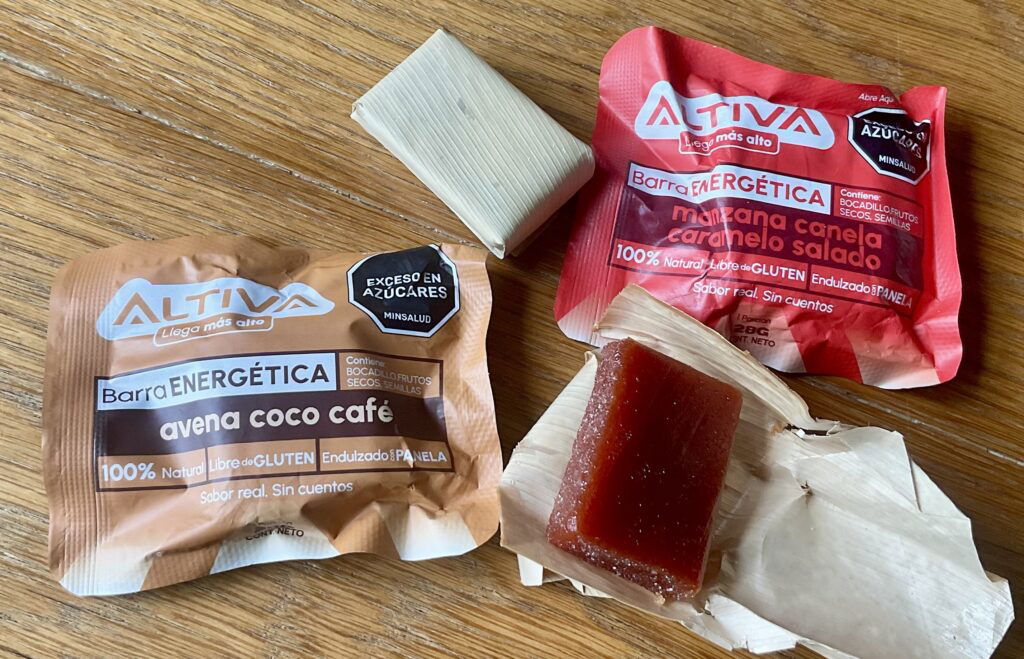
Bocadillos are rich in carbohydrates, particularly fructose and glucose. The high fructose content in bocadillos is beneficial for absorption and energy provision. Fructose and glucose are absorbed through different pathways in the intestines, allowing for a higher overall intake of carbohydrates than with glucose alone. This combination enables efficient energy delivery to muscles during prolonged physical activity, reducing fatigue and enhancing performance. You can find more details in our article about a simple, science-based energy performance drink.
As you can see above, pro cyclist Simon Pellaud is also well aware of the beneficial effects of #BocadilloPower. Colombian athletes, especially cyclists, have long favored bocadillos for their energy-boosting properties. These treats are a part of the local culinary culture and a practical choice for sustaining long, intense rides. Perhaps you’ll even inherit some Colombian climbing skills…
The packaged Italian Bars: Veloforte
Founded by Marc Giusti in 2016, Veloforte was created out of a need for real food that could provide sustained energy for endurance sports. The brand has quickly become popular among amateur and professional cyclists, embodying the best Italian culinary heritage while meeting the rigorous demands of modern endurance sports. Admittedly, these products are sports performance bars, but their natural ingredient composition warrants their inclusion on this list.
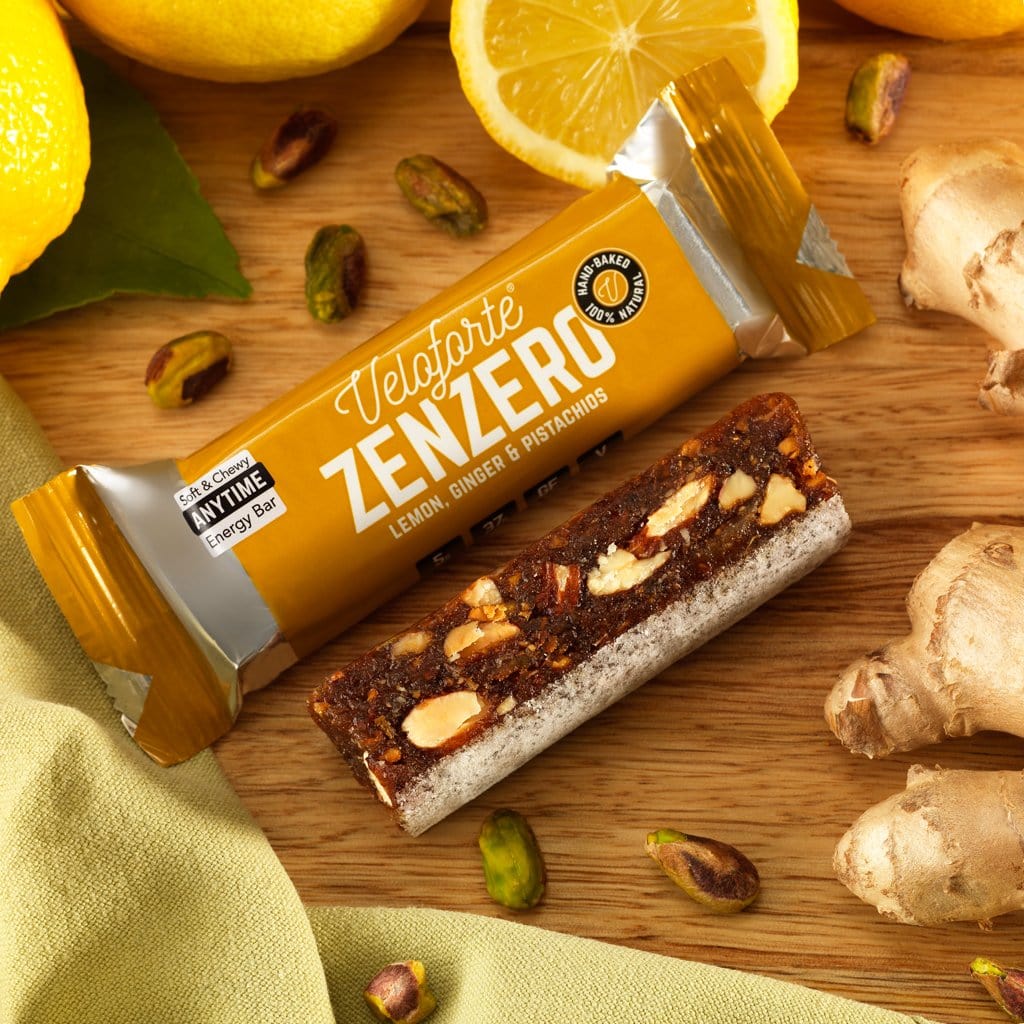
Veloforte bars are based on the traditional Italian panforte recipe, a dense, chewy fruit-and-nut cake originating in Siena. Panforte, which translates to “strong bread,” has been made in Italy since the Middle Ages and is known for its long shelf life and energy-dense properties, making it an excellent food for long journeys and physical activities. The bars offer a modern twist on the traditional recipe, crafted with a blend of fruits, nuts, and spices. Combining natural ingredients ensures a balanced intake of carbohydrates, proteins, and fats, essential for sustained energy release and muscle recovery during long zone 2 rides.
The Veloforte sports performance bars closely resemble a more natural food source, containing fruits, nuts, and spices. They are based on the traditional “panforte” recipe from Siena, Italy.
Because of their natural ingredients, the Veloforte bars are also rich in essential vitamins and minerals, supporting overall health and performance. Their compact and portable packaging makes them convenient to carry on long rides, ensuring you have access to high-quality nutrition whenever you need it. Alright, enough of the advertising, I think you got it…great bars, try them!
You got the energy, let’s create the maximum speed out of it
We’re wrapping up this post and hope you’ve found some new fuel options for your endurance training. Now that we’ve covered fuel, perhaps you’d be interested in learning about aerodynamics and how to maximize your speed by applying the principles from our trilogy on cycling aerodynamics.
 Made me Slower
Made me Slower
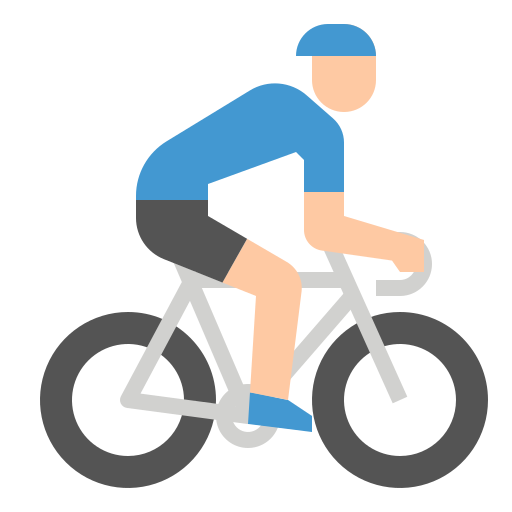 Same, Same
Same, Same
 Made me Faster
Made me Faster

